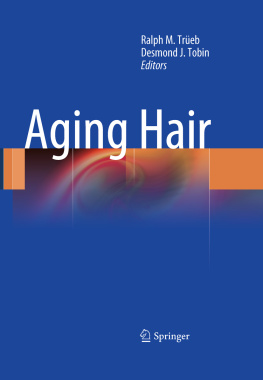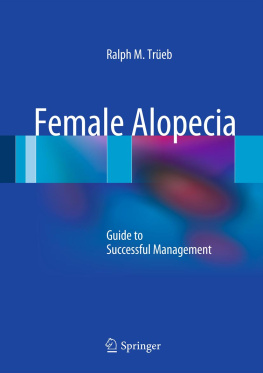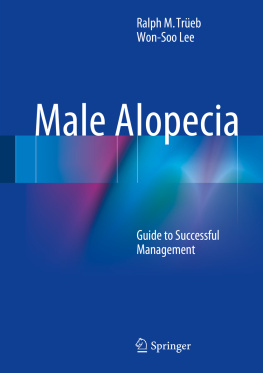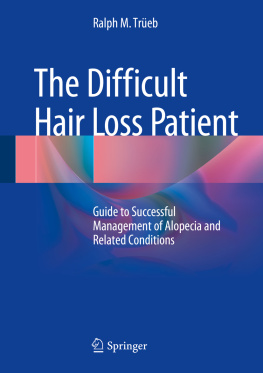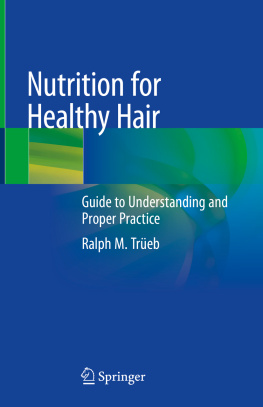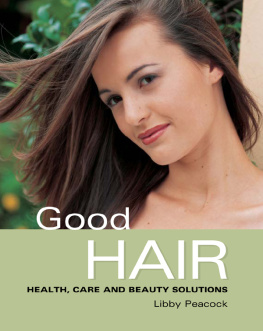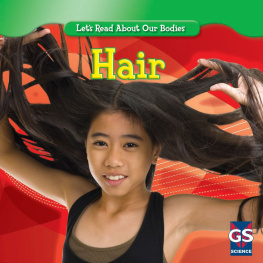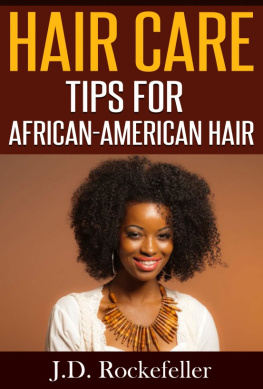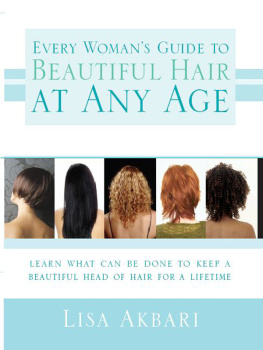Ralph M. Treb and Desmond J. Tobin (eds.) Aging Hair 10.1007/978-3-642-02636-2_1 Springer-Verlag Berlin Heidelberg 2010
1. Gerontobiology of the Hair Follicle
Abstract
The word gerontology is familiar to most of us as a term that captures the study of the social, psychological, and biological aspects of aging. However, its derivative gerontobiology as applied to the hair follicle is more concerned with the latter aspect the biology of aging in the hair follicle mini-organ. As with any complex multicellular tissue system, the hair follicle is prone to broadly similar underlying processes that determine the functional longevity of organs and tissues. No matter how complex the tissue system is, it will contain cells that eventually lose functionality, reproductive potential and will ultimately die. The hair follicle is somewhat unusual among mammalian tissues in that it is a veritable histologic mlange of multiple cell types (e.g., epithelial, mesenchymal and neuro-ectodermal) that function contemporaneously in all stages of their life histories e.g., stem cells, transit-amplifying cells, and terminally differentiating cells. Some of these interactive cell systems appear to be nonessential for overall hair follicle survival (e.g., melanocytes). However, strikingly graying hair follicles may grow even more vigorously than their pigmented predecessors. Moreover, the hair follicle is unique in the adult mammal in that it follows a tightly regulated script of multiple lifelong cycles of cellular birth, proliferation, differentiation, and death. Powerful evolutionary selection ensures that the hair follicle is, in the main, hardwired against significant aging-related loss of function, even after 12 or more decades of life although some would argue with this view, if only on purely cosmetic grounds. Processes underlying aging in general, e.g., oxidative damage, telomere shortening, age-relating deficiencies related to nuclear/mitochondrial DNA damage and repair as well as age-related reductions in the cells energy supply, will all impact on whether some follicular cell subpopulations will enter cellular senescence. This chapter will focus on how gerontobiology of the hair follicle may impact on certain aspects of hair fiber phenotype.
Core Message
The word gerontology is familiar to most of us as a term that captures the study of the social, psychological, and biological aspects of aging. However, its derivative gerontobiology as applied to the hair follicle is more concerned with the latter aspect the biology of aging in the hair follicle mini-organ. As with any complex multicellular tissue system, the hair follicle is prone to broadly similar underlying processes that determine the functional longevity of organs and tissues. No matter how complex the tissue system is, it will contain cells that eventually lose functionality, reproductive potential and will ultimately die.
The hair follicle is somewhat unusual among mammalian tissues in that it is a veritable histologic mlange of multiple cell types (e.g., epithelial, mesenchymal and neuro-ectodermal) that function contemporaneously in all stages of their life histories e.g., stem cells, transit-amplifying cells, and terminally differentiating cells. Some of these interactive cell systems appear to be nonessential for overall hair follicle survival (e.g., melanocytes). However, strikingly graying hair follicles may grow even more vigorously than their pigmented predecessors. Moreover, the hair follicle is unique in the adult mammal in that it follows a tightly regulated script of multiple lifelong cycles of cellular birth, proliferation, differentiation, and death. Powerful evolutionary selection ensures that the hair follicle is, in the main, hardwired against significant aging-related loss of function, even after 12 or more decades of life although some would argue with this view, if only on purely cosmetic grounds.
Processes underlying aging in general, e.g., oxidative damage, telomere shortening, age-relating deficiencies related to nuclear/mitochondrial DNA damage and repair as well as age-related reductions in the cells energy supply, will all impact on whether some follicular cell subpopulations will enter cellular senescence. This chapter will focus on how gerontobiology of the hair follicle may impact on certain aspects of hair fiber phenotype.
1.1 Introduction
The function of scalp hair for humans is invested mostly in its value as a communication device or signal, and so together with epidermal pigmentation the hair fiber-producing mini-organ accounts for most of the phenotypic variation between different human subpopulations. Nature has made an enormous investment in the hair follicle, and as one of only two uniquely mammalian traits (in addition to mammary glands) serves several important functions for most other mammals. These include thermal insulation, camouflage, social and sexual communication (involving visual stimuli, odorant dispersal etc.), sensory perception, and protection against trauma, noxious insults, insects, etc. Because of our relative nakedness most attention and study is focused on scalp hair that, uniquely amongst primates, can be very thick, very long, and very pigmented. Thus, it is not surprising that its absence especially from the human scalp can result in significant psychologic trauma [], e.g., in cases of androgenetic alopecia, alopecia areata, and chemotherapy-induced alopecia. Our ancient psychologic preoccupation with hair is further heightened today as our increasing longevity inevitably fuels our desire to extend youthfulness, where hair fiber density, texture, length and color all drive the unremitting growth of the hair-care market, already a multibillion euro enterprise worldwide ( Euromonitor ).
Human hair growth can be distinguished from that in most other mammals by its rather mosaic pattern of hair follicle activity; we have all but lost our ability to grow hair synchronously or as a wave. Instead, each hair follicle has significant autonomy for growth and pigmentation. The hair bulb exhibits the bodys second highest rate of cellular proliferation (after hematopoietic and intestine tissue), and can still produce functional fibers right up until our last and oldest days of life even if this extends beyond 12 decades.
1.2 Biologic vs. Chronologic Aging
Although humans have between 3 and 5 million individual hair follicles on their bodies, most attention be it academic or commercial is focused on the paltry 2% of these that are distributed on our scalps []. Thus the cheek contains more than 20 times more hair follicles per unit area that the upper arm.
Against a backdrop of such hair growth diversity are the additional contributions made by race and ethnicity, sex, climate and season, hormonal status, nutrition etc. One needs to take these factors into consideration before deducing underlying abnormality or before conflating biologic and chronologic aging factors. For example, the observation that males castrated before puberty do not go bald (does this impact on hair senescence?) or grow beards (does this impact on hair follicle maturity?) and the subsequent confirmatory finding that these individuals did so upon treatment with testosterone, indicates a role of androgens in hair growth []. But do these changes really reflect aging in action, either accelerated or retarded?
1.3 Variation in Hair Types During the Life of a Hair Follicle
The hair follicle produces several different types of hair fiber during a normal lifetime; represented by fine unpigmented lanugo hair in the fetus/neonate, short (mostly unpigmented) vellus hair or fine pigmented intermediate hairs during childhood, and long thick terminal hair shafts in several body sites in the adult. It is worth emphasizing that such modulation of hair fiber form from the relatively long, downy and variably pigmented hairs (lanugo) before birth to almost imperceptible colorless fibers (vellus) after birth, to coarse terminal hairs of phenomenal length (up to 4 m) all appear to occur within the same single hair follicle. Indeed, terminal hairs can be as abrasive as copper wire at certain cut lengths. This is, in my view, even more impressive than the striking range of hair types characteristic of other species, e.g., vibrissae, tylotrich, zigzag, auchenes of mouse skin. In the latter mammal current data suggest murine hairs are each produced within their predetermined hair follicle subtypes []. Moreover, there is much clinical evidence of transformations between different forms of hair fiber produced by a single human follicle during the life of an individual in both health and disease.

